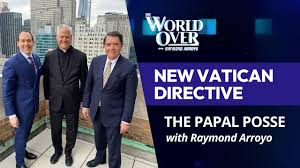In 1935, Cecil B. DeMille paid Harold Lamb, a writer of historical novels, the 2018 equivalent of $150,000 for a “treatment” (a dozen-or-so pages) of the story of Samson from the Book of Judges – such was the popularity of the Biblical epic. And DeMille’s Samson and Delilah would become a huge success, although it wouldn’t reach the screen until 1949. It became the highest-grossing film of 1950 and was the precursor of DeMille’s even more successful The Ten Commandments (1956), itself a remake of his own 1923 film of the same name. (His 1927 King of Kings is, in my opinion, one of the best silent films ever made.) DeMille, who pretty much founded Hollywood, never stopped looking to the Bible for inspiration.
Reviewing The Ten Commandments for the New York Times, Bosley Crowther wrote:
This is unquestionably a picture to which one must bring something more than a mere wish for entertainment in order to get a full effect from it. But for those to whom its fundamentalism will be entirely credible, it should be altogether thrilling and perhaps even spiritually profound.
By “fundamentalism” one assumes Mr. Crowther meant the film’s respect for its Biblical source, and he would probably have agreed with Variety’s take on Samson and Delilah: “a fantastic picture for this era in its size, in its lavishness, in the corniness of its story-telling and in its old-fashioned technique.”
Those are fair judgments about most Biblical epics – at least until Franco Zeffirelli’s Jesus of Nazareth (1977), which was a bridge between what Variety, two decades earlier, had called the “smarties and the hinterlanders.” I’ll get to Mel Gibson in a minute.
It’s surprising that the story of Samson wasn’t retold in the era of bodybuilder wannabe-epics. I mean: Schwarzenegger: Samson!
Perhaps that was because knowledge of the Hebrew Scriptures had diminished among American Christians. Our Lord Jesus we do know, thus the success of Mel Gibson’s The Passion of the Christ (2004) – and the almost certain success of his forthcoming The Resurrection; forthcoming, that is, if Mr. Gibson can keep it together, which I think he can and will, as his success with Hacksaw Ridge (2016) proves. (And good luck to Jim Caviezel, playing Jesus three days later – fifteen years after – and not getting struck by lightning this time!)

Anyway, a Samson redux awaited 2018, a year in which – to judge from Bruce Macdonald’s Samson – the energy of the Biblical epic is all but spent. That’s too bad, because Samson’s story is one of the most remarkable in all of Scripture. Indeed, if you’ve not read Judges 13-16, you really owe it to yourself to do so.
Mr. Macdonald’s film follows some of what’s in the Bible, but it’s mostly the barest outline of the outrageous tale. Macdonald’s film is, to bend a popular phrase, Biblical without being religious. And there’s no borrowing from John Milton’s Samson Agonistes either, so he can rest in peace.
(Milton wrote: “Promise was that I/Should Israel from Philistian yoke deliver;/Ask for this great Deliverer now, and find him/Eyeless in Gaza at the Mill with slaves . . .” I’m determined to use that last line in reply the next time my wife texts, “Where r u?”)
Samson’s Samson (Taylor James) is a brawler, a bit more like John L. Sullivan or a character out of Fight Club than a man on a mission from God, the last of Israel’s judges. We do learn that he is a “nazirite for God” – a man consecrated to the Lord and pledged to drink no wine, to never cut his hair, and to always refrain from touching a dead body. Of course, Samson – Biblical and cinematic – pretty much ignores all that, unless you believe he always managed to keep a jawbone-of-an-ass’s distance from the bodies of those many, many Philistines he slaughtered. And a haircut and wine were his undoing.
Of course, the upside of that downside – his capture, blinding, and imprisonment – is that he finally succeeds in doing God’s will.
Mr. James is an earnest Samson, good in the fight sequences, but the film’s most remarkable scene, true to the Source, is of a field of flaming foxes at night. The Book of Judges tells us Samson caught 300 foxes (jackals in some translations) and tied torches between the tails of 150 pairs and set them loose upon the Philistines’ fields. Quite a sight on a dark night.
And speaking of the dark, much of Samson is shot in darkness, a technique Mel Gibson never uses in his well-funded films, besides which Mel never has anything to hide, which the darkness does, saving precious dollars. The film’s action sequences – Samsonis contra omnes – are overlong and repetitive.
DeMille, a good high-church Episcopalian, appreciated the lushness of religious imagery in Western art and the Technicolor process provided a perfect palette for Biblical tales. But . . . whereas Samson and Delilah is colorful, it’s also bland, not least because the Lord is missing. The star, Victor Mature, prays, but in the end his triumph is more a matter of muscle than faith. Still, DeMille put his money up on the screen.
The biggest line-item expenditure in Macdonald’s Samson appears to have been its beard budget. Male actors – those playing Israelites anyhow – begin with beards, return with longer beards, and return again with even longer ones, an unintended sight gag that rivals the best of Monty Python.
Mind you, Samson is a fairly harmless way to while away an hour-plus. It’s just that it could have been so much more, by which I mean: more like those precious four chapters in the Book of Judges. More about faith in God.
___
Samson was produced by Pure Flix Entertainment and is rated PG-13 for all the piling up of bodies, of which there are many, although not as many as in a Die Hard movie. I’m assuming only F/X foxes were flambéd in the filming of this epic. With Lindsay Wagner and Rutger Hauer as the strongman’s parents, Billy Zane as bad King Balek, and Caitlin Leahy as Delilah. She’s lovely, but she’s no Hedy Lamarr.
*Image: Samson and Delilah by José Etxenagusía Errazquin, 1887 [Museo de Bellas Artes de Bilbao, Spain]














